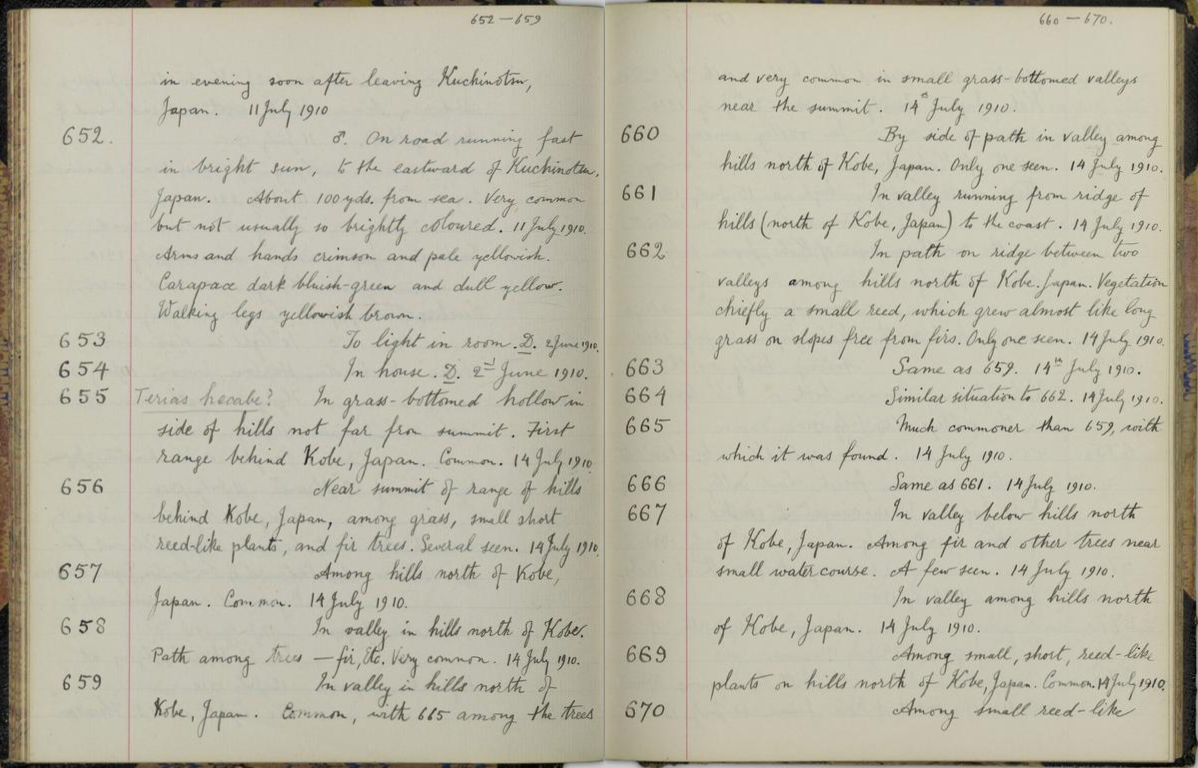Field notes are an essential tool for all scientists or researchers who work in the field to record their observations of a specific phenomenon or organism they are studying. The notes usually contain information about the location, date, and description of the specimen. Often these recorded observations might seem trivial at the time, but on reflection, it can become the basis for new insights (Knapp, 2011).
The field notes make the labeling of the collected specimen a lot easier, once the researcher is back at the lab or office. According to Knapp (2011), field notes are rarely archived, whereas lab books are retained as permanent records (e.g.: could be used if there is a case of scientific misconduct).
That is one of the reasons why the two Field Notebooks of H. G. Hook from the early 1900s are unique items in our collections! The first notebook contains 274 pages and the second notebook contains 73 pages and they were both documented between 1904 and 1912.
Unfortunately, there isn’t much information about the donor, H. G. Hook, that we could find, however, there is a section in UBC Calendar published in 1929 under the updates for Department of Zoology that provides some provenance details.
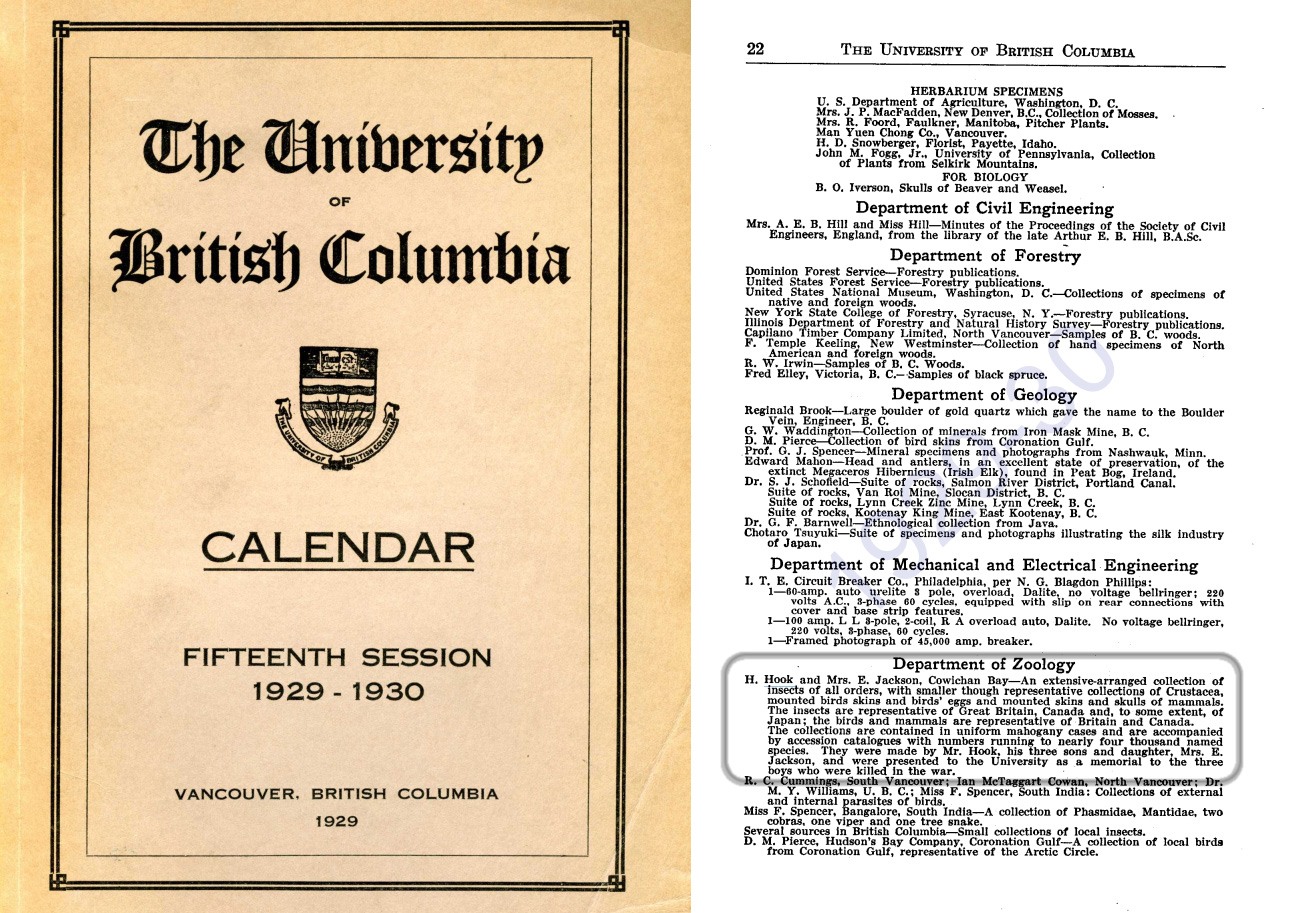
UBC Calendar published in 1929. Page 22 contains information about the provenance of the two field notebooks of Hook.
According to this source, the field notebooks were donated to the UBC Zoology Department by Mr. Hook and Mrs. E. Jackson in May, 1928. The impressive donation was described as “an extensive and arranged collection of insects of all orders, with smaller, though representative collections of Crustacea, mounted bird’s skins and bird’s eggs and mounted skins and skulls of mammals.” It also states that “the insects are representative of Great Britain, Canada and, to some extent of Japan; the birds and mammals are representative of Britain and Canada.”
These field notebooks “contain information about the items in collection, which were accessioned and catalogued with numbers that were running to nearly four thousand named species! They were made by Mr. Hook, his three sons and daughter, Mrs. E. Jackson, and were given to the University as a memorial to the three boys who were killed in the war.”
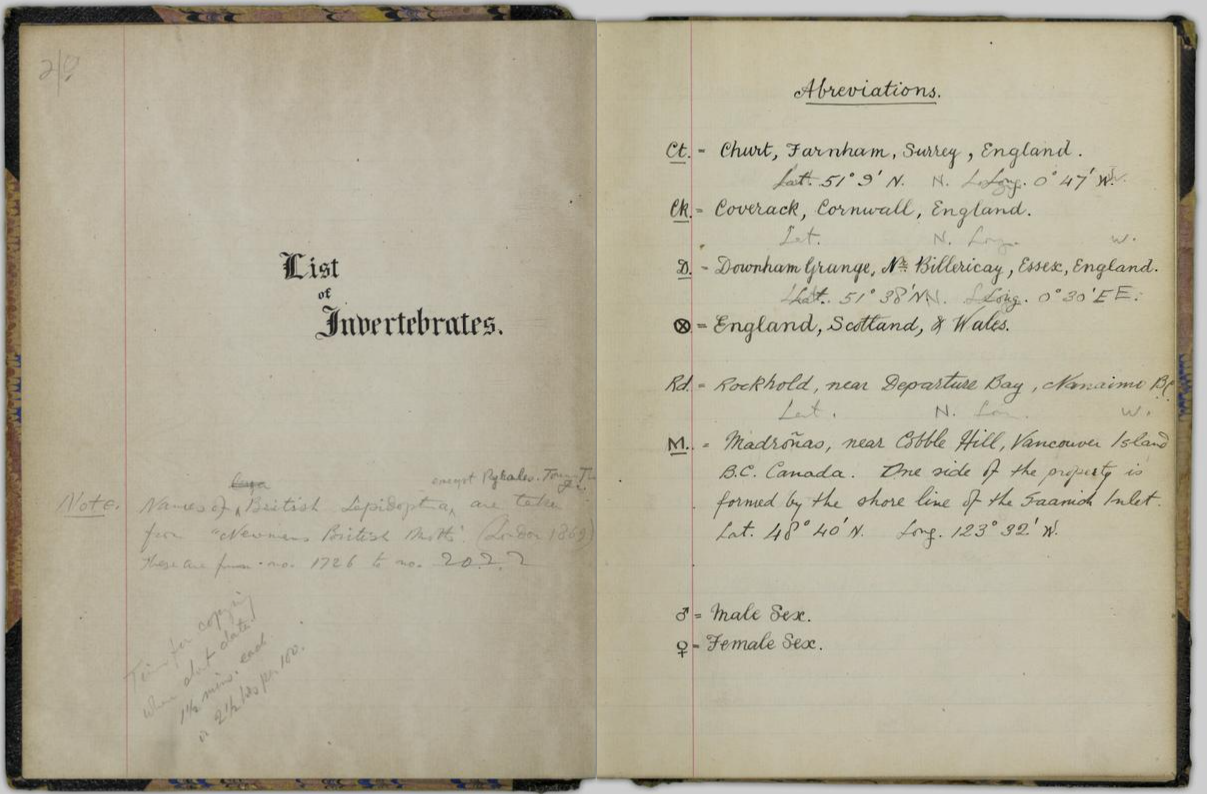
On the first page of the field notebook – V. 1, Hook provides notes on abbreviation and geographic coordinates.
Although these field notebooks do not contain illustrations, the authors were well organized, with detailed numbering system that match the exact insect they are referring to. In addition, the handwritten accounts provide an insight of their itinerary and timeline to various places around B.C., Canada, Great Britain, as well as Japan. Hook begins his notes with abbreviations, and even provide the geographic coordinates of the locations.

Detail of the page 164 from the Field Notebook Vol. 1, in which Hook states that specimen 1599 (on the right) was given to him by somebody.
From reading the notes on page 164, one notices that people other than Hook and his sons also engaged in this investigation and played a small part in helping them collect specimens. For example, for specimen 1599 (image above), Hook writes “Given to us alive, Rd. July 1911. Said to have been captured on Gabriola Island near Nanaimo, B.C.” Another example is noted on page 209, where he wrote that specimens 2221 – 2229 were a collection given by F. G Stephens.
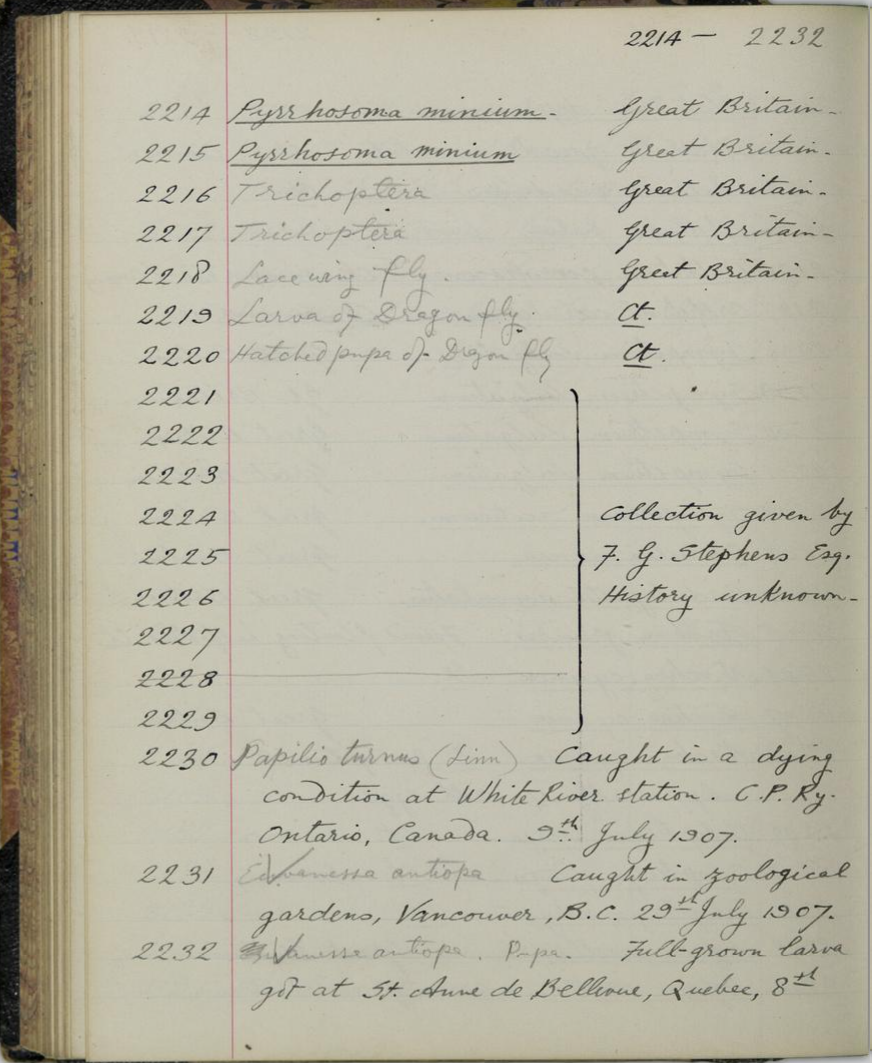
Another example from page 209 of the Field Notebook Vol. 1, where Hook notes that that several specimen (2221 – 2229) were provided by other people.
Hook also provides an interesting context and insight on the behavior of the insects before they were caught. For specimen 2579, he writes “Flying in sun with a buzzing sound and alighting on bark of fallen cotton-wood tree. Caught within 5 minutes of no.2586. Bulky Valley, 14 miles east of Hazelton, B.C. 16th May, 1911.”
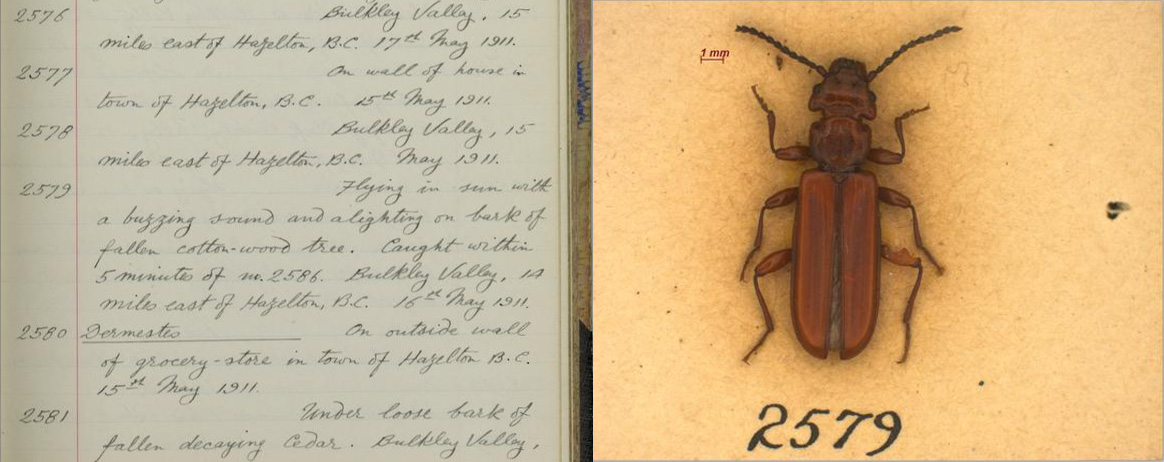
Detail of the Field Notes Vol. 1, with handwritten notes about specimen 2579, from page 228 and 229.
Another example is the specimen 792 caught in Yokohama, Japan on July 22, 1910, where he observes in detail the behavior of a butterfly: “Caught settled on bough of tree on partly cultivated hill about 3 miles west of Yokohama. These butterflies usually kept among the tree tops of a clump of trees on a hill partly cultivated. Sometimes this individual came down to a lower level on the sunny side of the clump, flying with great force and speed, and only occasionally settling on a low bough.”
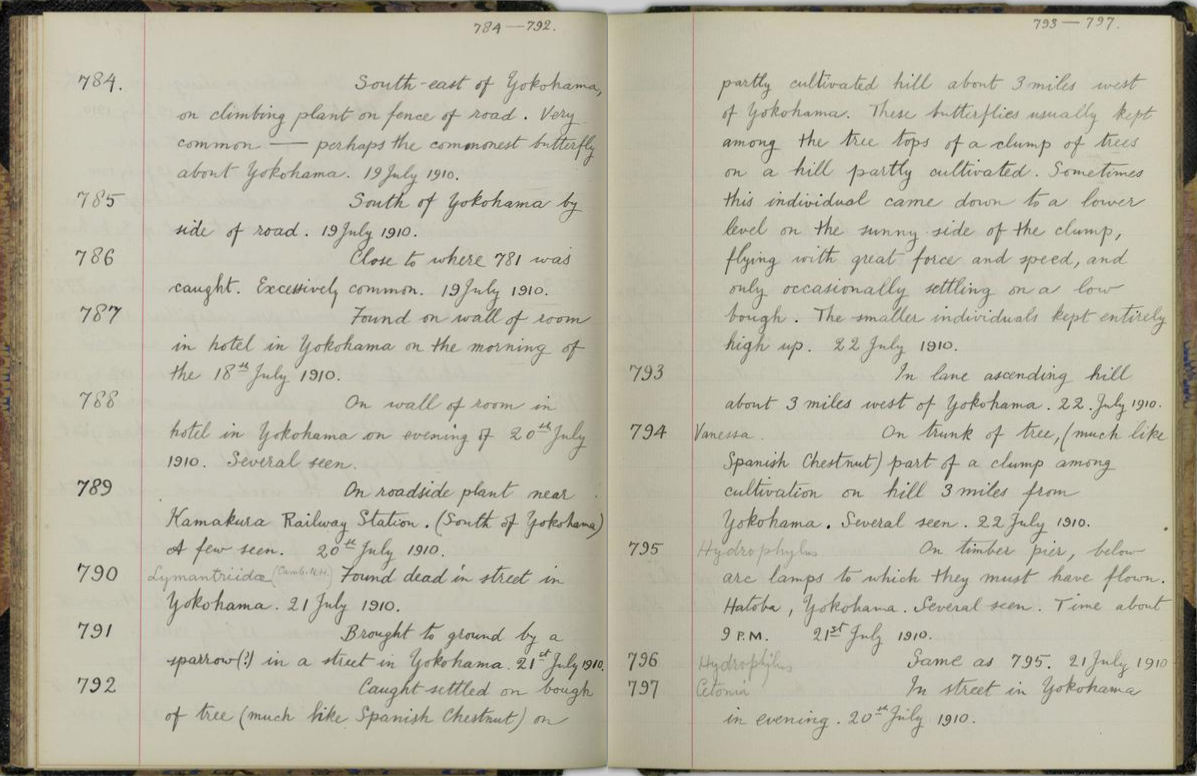
Description of a behavior of a butterfly, specimen 792, written by Hook in 1910. Text located on pages 74 and 75.
In 2009, the Hook collection, amongst others, was transferred from the UBC Zoology Department to the Beauty Biodiversity Museum located at the University of British Columbia – Vancouver Campus where it is currently housed.
I hope you enjoyed learning a bit about The Field Notebooks of H. G. Hook!
Resources:
Knapp, S. (2011) Techniques: Records in the field. Nature 474, 280–281.
UBC Zoology – Spencer Entomological Collection
UBC Calendar Fifteenth Session 1929 -1930
